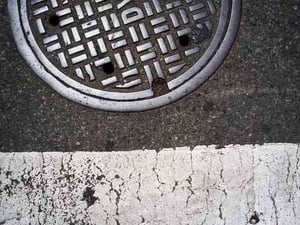Getting Ahead in 2018: Conduit Inspections (Part 2 of 3)
 In this post, we suggest ways to get ahead in 2018 by reviewing vital tools for strengthening joint use operations and management. The first article in this series, “Getting Ahead in 2018: Pole Inspections (Part 1 of 3)” discusses utility pole asset organization for the coming year. Joint use inspections are necessary to streamline business and field processes.
In this post, we suggest ways to get ahead in 2018 by reviewing vital tools for strengthening joint use operations and management. The first article in this series, “Getting Ahead in 2018: Pole Inspections (Part 1 of 3)” discusses utility pole asset organization for the coming year. Joint use inspections are necessary to streamline business and field processes.
Conduit vault damage, violations, and trespass: all can be pricey and time-intensive. Up-to-date audit records strategize joint use activity in the field. In this article, we took some of America’s favorite New Year’s Resolutions and applied them as a business model for utility and communications assets in manholes and handholes.
Get in Shape
Getting in shape means being the best you can be.
Save More, Spend Less
Vault damage may include structural damage, contaminating environmental hazards, & a void of manufacturer’s warranties—to name a few. Violations accrue from several factors (damage, trespass, wear-and-tear), and many vault owners are surprised to learn that a hefty amount of violations are from their own contractors. The consequences of damage reach far beyond the underground space, directly affecting financial, operations, and management departments. Further, underground harm results in a multitude of above ground problems: lack of communication, inability to diagnose real issues, causing confusion. Puzzling systems leave employees and customers distressed.
When owners hire inspectors to inventory vaults, they are taking a chance on missing damage, trespass, and violations that end up being very dangerous in the future. The costs to fix these problems add up substantially, costing owners more than it would to hire a professionally-trained inspector from the beginning. Consider vault space in the same light as any other real estate: the field inspector is the key to the success of any audit project.
Other ways to save money throughout 2018 is employee satisfaction. For some, it may seem trivial to lose one customer here or another employee there, but the numbers add up and prove an ongoing cycle: An average of four-to-five customer service employees leave their job every month, and 30-45% of call center representatives leave their job annually.
According to the Quality Assurance and Training Connection, it typically costs businesses about $6,000 to replace one employee at a $12 per hour rate. This means that businesses spend roughly $360,000 next year to replace unhappy call center customer representatives. Why so expensive? The Quality Assurance and Training Connection factors in gaps in staffing, human resources training spend, administrative cost for new hires, and training time. It also states that when employees in a department are understaffed and overworked, they tend to give poor customer service which, in turn, produces higher statistics of customer loss.
Make New Friends
Service providers and other non-profit deployment advocates are committed to closing the digital divide. Comcast’s Internet Essentials has linked Americans living in rural areas to high-speed internet service. Internet Essentials has connected around 4 million Americans, or more than 600,000 low-income families, to the internet in their homes. Similarly, Microsoft is stepping up to help deploy broadband through their Rural Airband Initiative program to help set up broadband connections for 2 million people in rural areas by 2022.
Keeping up good relationships with fellow joint use partners helps promote safety, access, and overall deployment success.
Be Proactive and Follow Through
Aside from knowing where assets are, and knowing which owners and attachers are in the space, a routine inspection of each underground vault is important for maintenance and safety. This benefits all parties involved, from asset owners to occupants, contractors and inventory personnel. Above all, regular inspections keep spaces safe. Further, every State has environmental regulatory practices that must be adhered to. Regular audits ensure those regulations are met.
Truly credible auditors not only identity violations, trespass, and damage, but also track and report updates in real-time. When hazardous conditions are found, asset owners need the ability to quickly access information.

Comments